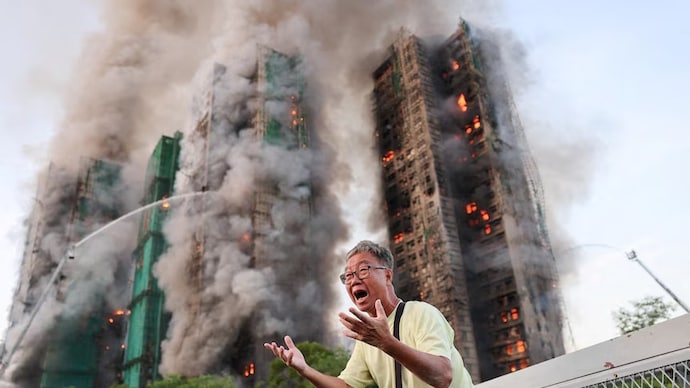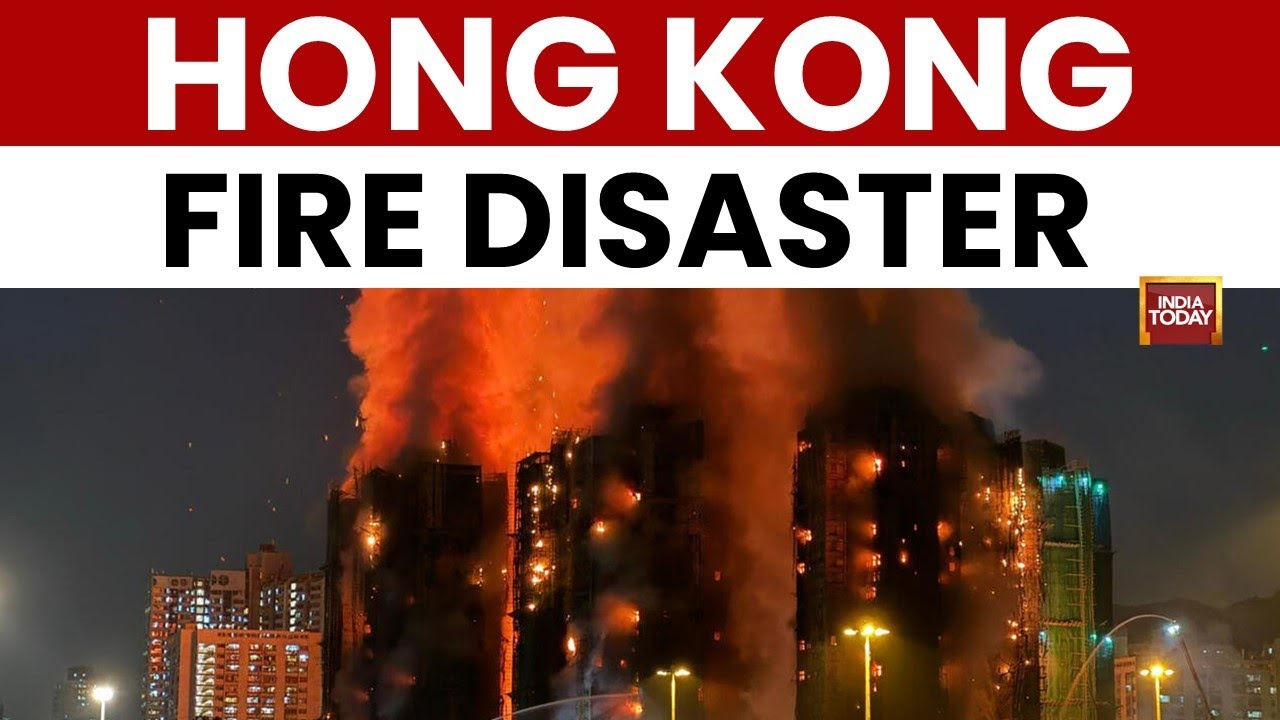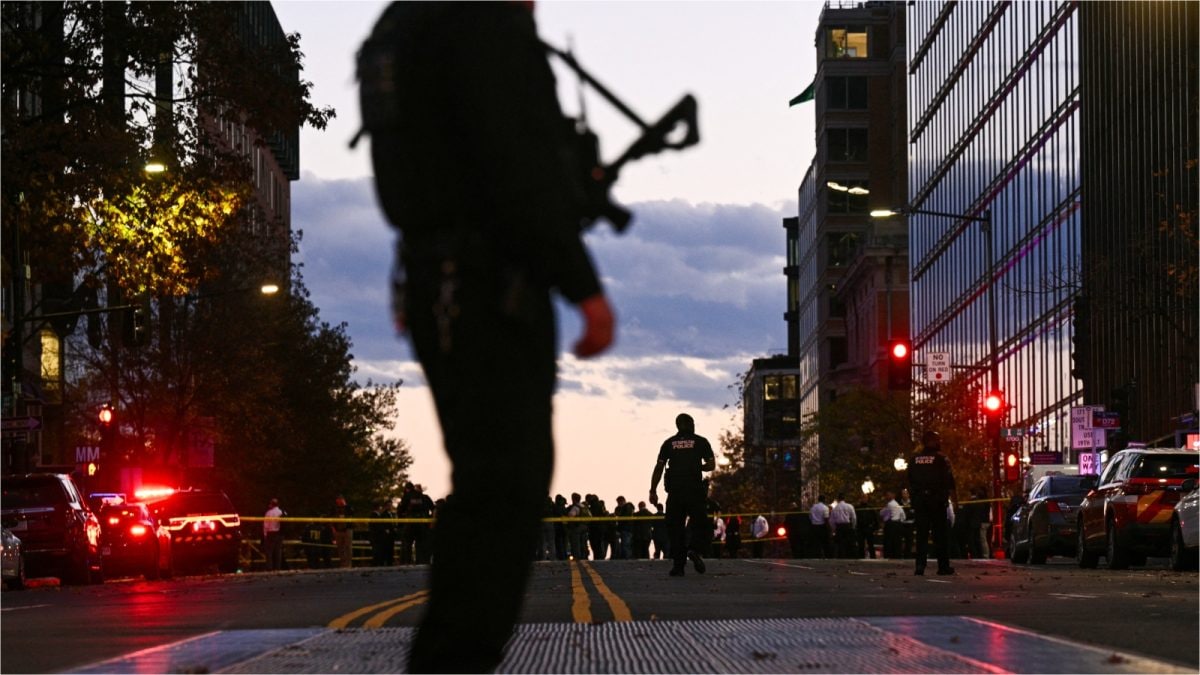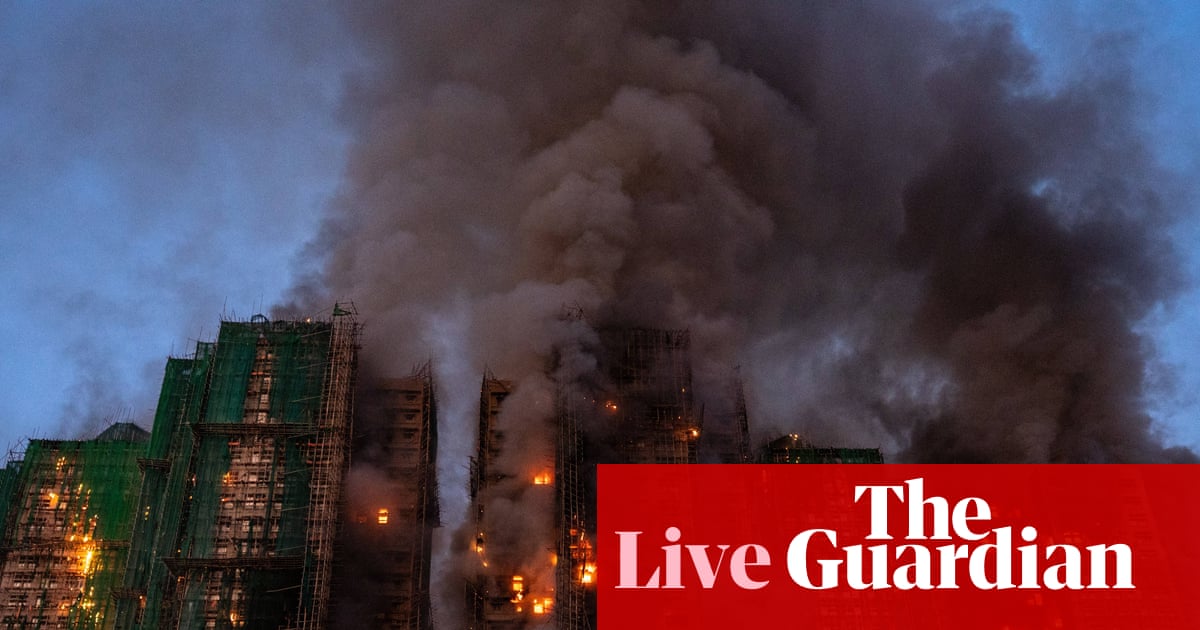A deadly fire tore through a Hong Kong high-rise, killing 55, with hundreds still unaccounted for. As investigators probe the cause, there are theories circulating. Was it the traditional bamboo scaffolding or the low-quality Chinese construction nets that spread the inferno? The fire raises urgent questions about building safety standards.

In the Hong Kong fire, police found the construction company's name on flammable polystyrene boards that had been blocking several windows. (Reuters Image)
On Wednesday, a deadly blaze ripped through a high-rise residential housing complex in Hong Kong, killing at least 55 people, with around 300 others unaccounted for in what is being called the deadliest fire in the Chinese administrative region. While authorities have scrambled to determine what caused the fire to spread, people and experts are debating whether the centuries-old bamboo scaffolding or the cheap Chinese construction nets that fuelled the blaze.
News outlets from Hong Kong reported that flames raced up the bamboo scaffolding and mesh-covered roofs around the high-rise towers, raising questions about what could really have contributed to the fire.
The hashtag "Why Hong Kong still uses bamboo scaffolding" trended on Chinese social media platform Weibo, with many urging the city to follow mainland China's lead. However, Hong Kong's secretary for labour in July said that "the government has no intention of banning the use of bamboo scaffolds".
While some blamed the bamboo scaffolding for the fire, others, claiming to be locals, insisted it was the substandard Chinese netting, noting that bamboo was sturdy and non-flammable.
WHAT HAPPENED IN HONG KONG?
The fire began at midafternoon on Wednesday, when a public housing estate wrapped in bamboo scaffolding and green construction mesh as part of ongoing renovation work, was seen engulfed in flames. Firefighters rushed to rescue hundreds of people trapped inside multiple 31-story towers engulfed by the fire.
By Thursday, at least 55 people were reported dead and hundreds missing.
Police have arrested three individuals from the construction company on suspicion of manslaughter, citing "gross negligence" and the use of substandard materials, including flammable nets and foam-boarded windows.
Police discovered the construction company's name on flammable polystyrene boards that were blocking several windows at the apartment complex, which the fire services director described as "unusual", reported US news outlet CNN.
Hong Kong's skyline, long defined by the iconic bamboo scaffolding surrounding skyscrapers, sometimes as high as sixty-storeys. While the bamboo structures are praised for flexibility, low cost, and sustainability, its combustibility has become a focal point alongside concerns about cheap Chinese construction nets.
WHY TRADITIONAL BAMBOO SCAFFOLDING IS RISKY?
Bamboo scaffolding has been a hallmark of Hong Kong's skyline for decades. Apart from being light, cheap, flexible, and fast to erect even on narrow streets, it has long been a choice for construction against modern metal scaffoldings.
It is much like in India, where bamboo scaffolding is still widely used for most buildings, except for commercial structures and in metro cities.
But critics argue that in high-rise buildings bamboo's flammability is a major risk.
"Bamboo is definitely a flammable material," said Xinyan Huang, an Associate Professor at the Hong Kong Polytechnic University's Building Environment and Energy Engineering Department.
"In a very dry season, once it's ignited, the fire spread will be superfast," Huang told CNN.
Given that bamboo poles are often oriented vertically on highrises, a blaze can race upward almost unhindered. The scaffoldings effectively become ladders of fire.
In many earlier incidents, fire involving scaffolding has led to collapse or serious external damage and industrial accidents tied to bamboo scaffolding have caused 22 deaths in Hong Kong between 2019 and 2024, reported news agency Reuters.
CHINESE NETS, THE HIDDEN FUEL IN HONG KONG FIRE?
But many experts, officials, and locals stress that bamboo alone isn't to blame.
The fire's intensity, to them, appeared linked to cheap, flammable nets, plastic sheeting, and possibly foam insulation. All these things are used during renovation work. These green construction nets are used in India as well.
The ABC Chinese reported that Hong Kong's Secretary for Security Tang Ping-keung said that the local fire department discovered "unusual" situations, like, the protective netting, protective film, some waterproof tarpaulins and plastic sheets on the building's exterior walls.
Award-winning Hong Kong–based photographer Galileo Cheng, on X, noted that the bamboo scaffolding withstood 14 hours of the Hong Kong Fire, while videos on Threads showed non-compliant, non-fire-retardant construction netting burning fiercely, dripping, and spreading within seconds.
"The fire is likely due to a combination of factors, including the plastic scaffolding encapsulation, plastic sheeting, polystyrene, the bamboo structural scaffolding, and any other flammable components," an Australian fire safety engineer, Alex Webb, told The Independent.
"Those substandard garbage is mainly imported from China across the border for cost-cutting purposes. The construction workers were also likely imported from China as well, who are known chain smokers that lit up those Chinese-made scaffolding nets," claimed another person on X.
In short, while bamboo could have been the structural skeleton, the "fuel" might have been the cheap Chinese nets and other materials that failed to meet fire safety standards.
That is what Raymond Cheung, a former Hong Kong firefighter, also emphasised. He held that it's not just the bamboo, as many are claiming. Cheung told the ABC Chinese that while bamboo scaffolding used across Hong Kong can indeed ignite quickly, the tragedy should not be attributed to a single material before a full investigation is completed.
For now, the Hong Kong government has set up a task force and ordered immediate inspections of ongoing projects, especially those using bamboo scaffolding and mesh. Earlier this year, it had already mandated that at least 50% of new public-works contracts switch to metal scaffolding, though it stopped short of banning bamboo entirely. The tragedy in Hong Kong shows it was likely a dangerous combination of a flammable skeleton, cheap covers, and lapses in enforcement in a semi-autonomous region otherwise known for strong compliance and strict standards.
- Ends
Published By:
Sushim Mukul
Published On:
Nov 27, 2025
Tune In

 1 hour ago
1 hour ago


















